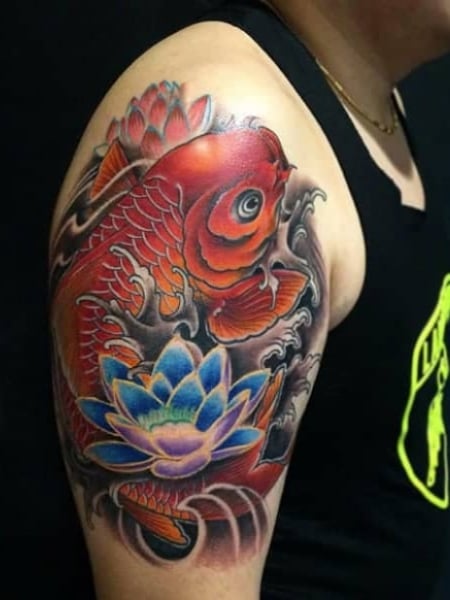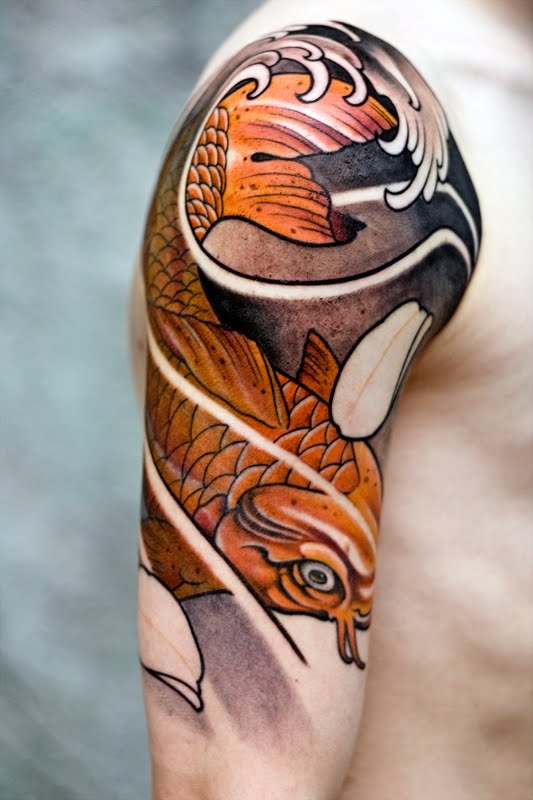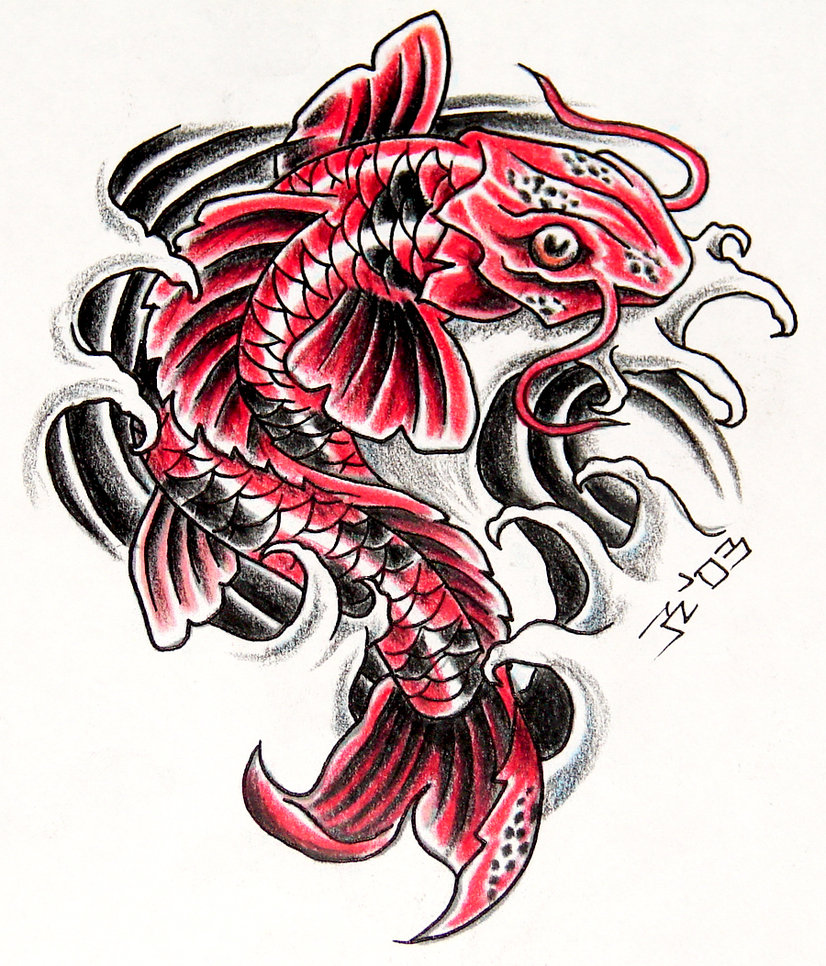
Introduction
Japanese koi fish tattoo designs with lotus flowers have gained immense popularity in recent years. The combination of these two elements represents various symbolic meanings and holds significant cultural value in Japanese art and mythology. This article delves into the captivating world of Japanese koi fish tattoo designs embellished with lotus flowers, exploring their symbolism, design variations, and the reasons behind their prominence in tattoo culture.

The Symbolism of Japanese Koi Fish
In Japanese culture, koi fish symbolize strength, perseverance, and determination. These vibrant and majestic creatures are known for their ability to swim against powerful currents and even jump waterfalls, representing the triumph over adversity. They are also associated with good fortune, abundance, and success. Koi fish tattoos often depict them swimming upstream, signifying the overcoming of life's challenges and the pursuit of personal growth.

The Meaning behind Lotus Flowers
Lotus flowers hold deep cultural and spiritual significance in various societies, including Japan. These exquisite blooms emerge from murky waters, representing purity, resilience, and enlightenment. In Buddhist teachings, the lotus symbolizes the journey towards spiritual awakening and the attainment of inner peace. The combination of koi fish and lotus flowers in tattoos signifies the transformation from struggle to beauty, as the fish navigate through life's challenges and emerge as graceful beings.

Variations of Japanese Koi Fish Tattoo Designs
Japanese koi fish tattoo designs come in a variety of styles, each with its unique appeal. Traditional Japanese tattoos, known as irezumi, often depict colorful koi fish surrounded by lotus flowers, waves, or other elements from nature. These designs typically feature bold lines, vibrant colors, and intricate details. Realistic or black and grey koi fish tattoos provide a contemporary twist, emphasizing the beauty and elegance of the fish. Watercolor koi fish tattoos, on the other hand, showcase vibrant splashes of color, giving a more artistic and abstract vibe.

Placement and Size Considerations
The placement and size of a Japanese koi fish tattoo with lotus flowers can vary according to personal preference and the desired level of visibility. For larger designs, the back, chest, or thigh are popular choices, allowing for intricate detailing and showcasing the beauty of the design. Smaller tattoos may be placed on the arm, wrist, or ankle, providing a more discreet option while still capturing the essence of this captivating tattoo style.

Choosing Colors for Your Tattoo
The choice of colors for a Japanese koi fish tattoo is crucial, as each hue carries its own symbolic meaning. Vibrant reds are often used to represent passion, courage, and power. Gold and orange hues symbolize wealth, prosperity, and success. Black koi fish tattoos, known as Matsukawabake, are associated with life's transitions and change. Blue koi fish embody calmness and tranquility, while white koi fish signify purity and spiritual awakening. The color palette should be chosen based on the intended symbolism and personal preference.

The Influence of Japanese Art and Mythology
Japanese koi fish tattoo designs with lotus flowers draw inspiration from traditional Japanese art and mythology. Artists often incorporate elements from ukiyo-e woodblock prints, which showcase the beauty of nature and the harmony between humans and their surroundings. Mythological creatures such as dragons and phoenixes are sometimes included in koi fish tattoos, further enhancing their symbolism and visual impact.

Popular Tattoo Compositions
Japanese koi fish tattoos can be combined with various other elements to create stunning compositions. The combination of koi fish, lotus flowers, and waves symbolizes strength, resilience, and the ability to navigate through life's challenges. Adding cherry blossoms represents the transient nature of life and the appreciation of its beauty. Tigers or dragons can be incorporated to enhance the strength and power of the design. The possibilities for unique and meaningful tattoo compositions are vast, allowing individuals to express their personal stories and aspirations.

Choosing a Skilled Tattoo Artist
When considering a Japanese koi fish tattoo design with lotus flowers, it is crucial to find a skilled and experienced tattoo artist. Japanese tattooing requires a deep understanding of the cultural and symbolic significance behind the design elements. Researching an artist's portfolio, reading reviews, and consulting with them about your ideas and preferences will help ensure that the final result meets your expectations and accurately portrays the intended symbolism.

Cultural Appreciation and Respect
It is essential to approach Japanese koi fish tattoo designs with lotus flowers and their cultural significance with respect and appreciation. Understanding the symbolism and historical context behind these tattoos helps in creating a meaningful design that honors the art form. Additionally, it is important to avoid cultural appropriation by consulting with a knowledgeable tattoo artist who can guide you in creating an authentic and respectful representation of Japanese tattoo culture.

Caring for Your Tattoo
Once you have your Japanese koi fish tattoo with lotus flowers, proper aftercare is crucial to ensure its longevity and vibrant appearance. Follow your tattoo artist's instructions regarding cleaning, moisturizing, and avoiding exposure to excessive sunlight or water. Keeping the tattooed area clean and moisturized will aid in the healing process and maintain the clarity of the design.

Conclusion
Japanese koi fish tattoo designs adorned with lotus flowers encapsulate the profound symbolism and beauty of Japanese art and mythology. These tattoos represent strength, perseverance, transformation, and spiritual awakening. The vibrant colors and intricate details make them visually striking, while the cultural significance behind each element adds depth and meaning. By carefully selecting a skilled tattoo artist and appreciating the cultural context, individuals can embrace this captivating tattoo style and create a personal symbol of their journey through life's challenges.